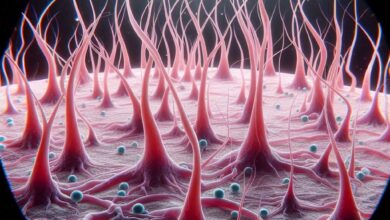Is There Really a Cure for Baldness? Exploring the Myths, Realities, and Potential Solutions

Baldness, particularly male pattern baldness (androgenetic alopecia), is a common concern that affects millions worldwide. It can lead to emotional distress and impact self-esteem, driving many to seek effective treatments and, ultimately, a cure. But is there really a cure for baldness? This article delves into the myths and realities surrounding baldness cures and explores the various treatments available today.
Understanding Baldness
Causes of Baldness:
- Genetics: The most common cause of baldness is genetic predisposition. Male pattern baldness, for instance, is hereditary and influenced by androgens, which regulate hair growth.
- Hormonal Changes: Hormonal fluctuations can lead to temporary or permanent hair loss. For example, conditions like polycystic ovary syndrome (PCOS) in women can cause hair thinning.
- Medical Conditions: Diseases such as alopecia areata, thyroid disorders, and scalp infections can result in hair loss.
- Medications: Certain drugs, including chemotherapy agents, can cause significant hair loss.
- Lifestyle Factors: Poor diet, stress, and lack of sleep can contribute to hair thinning and loss.
Myths about Baldness:
- Hats Cause Baldness: Wearing hats does not cause baldness. Hair follicles receive oxygen from the bloodstream, not from the air.
- Frequent Washing Leads to Hair Loss: Washing your hair does not cause hair loss. In fact, maintaining scalp hygiene is crucial for hair health.
- Baldness Comes Only from the Mother’s Side: Genetic predisposition to baldness can come from both the maternal and paternal sides of the family.
Current Treatments for Baldness
- Medications:
- Minoxidil (Rogaine): This over-the-counter topical treatment is FDA-approved for both men and women. It works by prolonging the growth phase of hair follicles and can be effective in slowing hair loss and promoting regrowth.
- Finasteride (Propecia): A prescription oral medication for men that reduces levels of dihydrotestosterone (DHT), a hormone linked to hair loss. It can slow hair loss and sometimes promote regrowth.
- Hair Transplant Surgery:
- Follicular Unit Transplantation (FUT): A strip of scalp with hair follicles is removed and transplanted to bald areas. This method can leave a linear scar but often results in natural-looking hair growth.
- Follicular Unit Extraction (FUE): Individual hair follicles are extracted and transplanted. This method is less invasive and leaves minimal scarring.
- Laser Therapy:
- Low-Level Laser Therapy (LLLT): This treatment uses red light to stimulate hair follicles, promoting hair growth. It is available in clinics and home-use devices.
- Platelet-Rich Plasma (PRP) Therapy:
- PRP Injections: Blood is drawn, processed to concentrate platelets, and injected into the scalp. Platelets contain growth factors that can stimulate hair growth.
- Alternative Treatments:
- Herbal Remedies: Some herbal supplements, like saw palmetto and ginseng, are believed to promote hair health, although scientific evidence is limited.
- Scalp Micropigmentation: A cosmetic procedure that tattoos tiny dots on the scalp to mimic the appearance of hair.
Future Directions and Research
- Stem Cell Therapy: Researchers are exploring the potential of stem cells to regenerate hair follicles. Early studies show promise, but more research is needed to determine efficacy and safety.
- Hair Cloning: This experimental technique involves cloning hair follicles and implanting them into the scalp. It could potentially offer a limitless supply of hair follicles for transplantation.
- Gene Therapy: Scientists are investigating ways to modify genes responsible for hair loss, aiming to prevent or reverse the condition at a genetic level.
Lifestyle and Preventive Measures
While there is no guaranteed cure for baldness, certain lifestyle changes and preventive measures can help maintain hair health:
- Balanced Diet: Ensure adequate intake of vitamins and minerals, particularly those linked to hair health, such as biotin, zinc, and iron.
- Stress Management: Chronic stress can contribute to hair loss. Practices like meditation, exercise, and proper sleep can mitigate stress.
- Avoid Harsh Treatments: Limit the use of harsh chemicals, heat styling, and tight hairstyles that can damage hair and scalp.
- Regular Scalp Care: Keep the scalp clean and well-moisturized. Consider using mild shampoos and conditioners designed for hair health.
Conclusion
While a definitive cure for baldness remains elusive, there are several effective treatments available that can slow hair loss, stimulate regrowth, and improve the appearance of thinning hair. Advances in medical research, particularly in the fields of stem cell therapy and gene therapy, hold promise for the future. For now, individuals experiencing hair loss should consult with a healthcare professional to explore the best treatment options tailored to their specific needs and conditions. By staying informed and proactive, those dealing with hair loss can find effective solutions to manage their condition and maintain their confidence and well-being.




